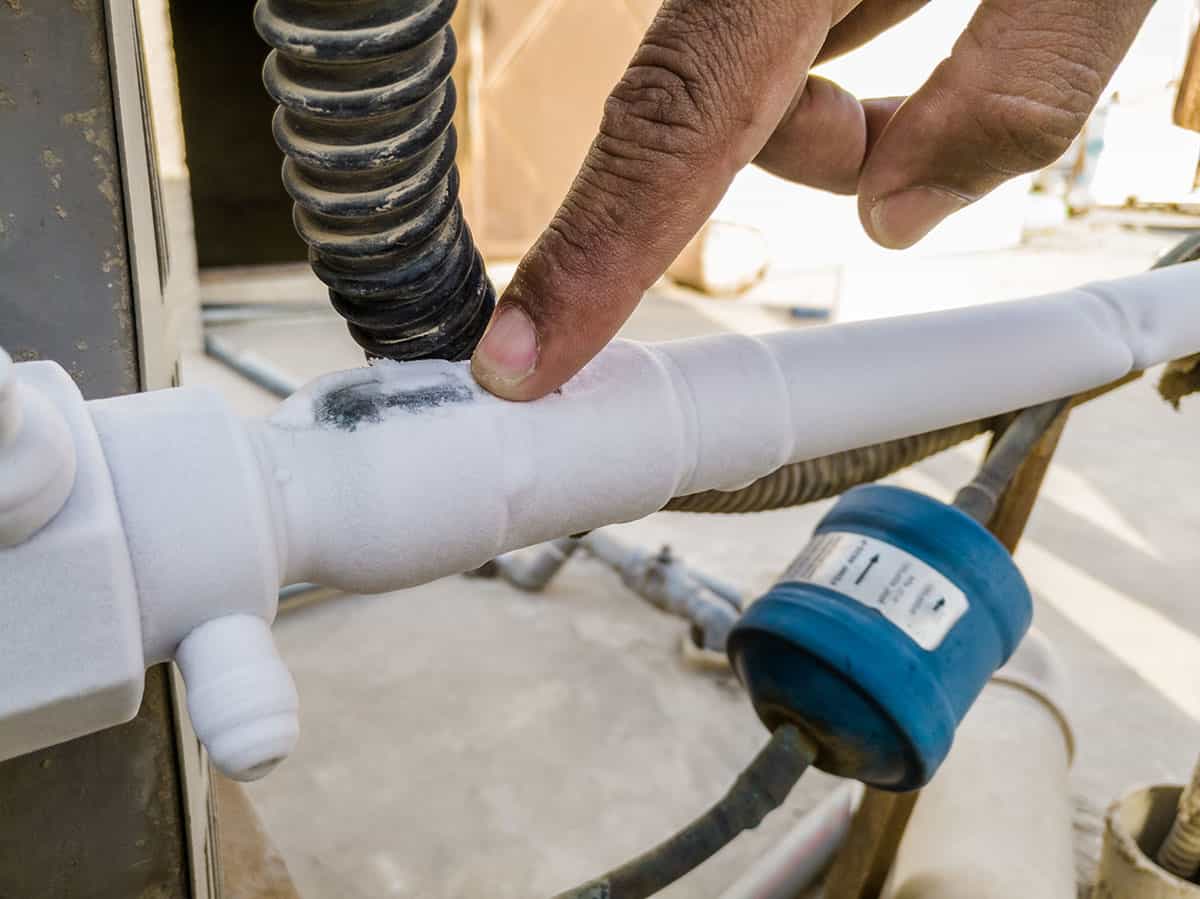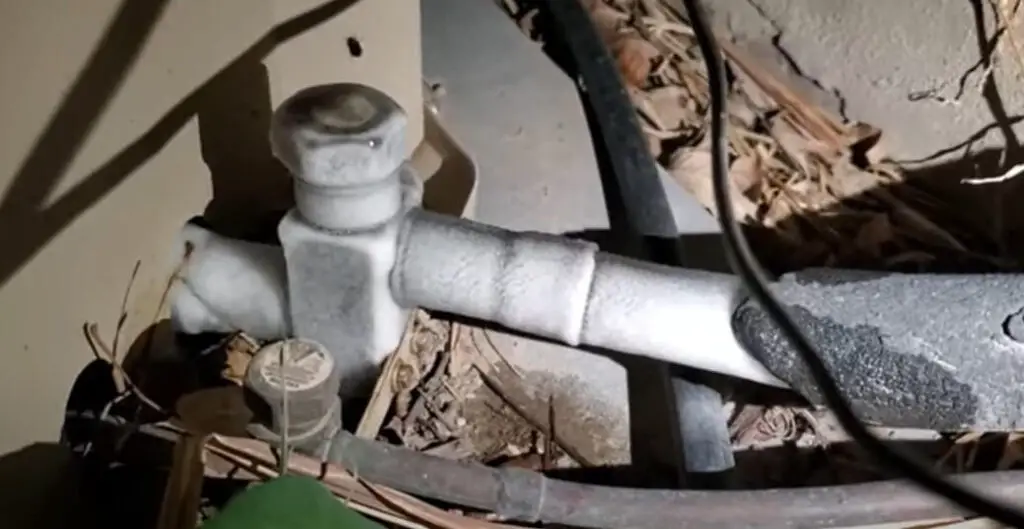Frozen AC Pipe - Identifying and Resolving the Issue Promptly
Frozen AC Pipe - Identifying and Resolving the Issue Promptly
Blog Article
Were you trying to locate ideas Have a Frozen AC Line? Here’s How to Fix It?

Intro
Finding that your AC pipe is frozen can be concerning, specifically during warm summer months when you rely on your air conditioning system the most. Comprehending what to do in such a scenario is essential to stop more damage to your cooling system and guarantee your convenience inside.
Understanding the Causes
A number of factors can contribute to the cold of an a/c pipeline. Comprehending these causes can help you deal with the issue effectively.
Absence of Airflow
One common root cause of a frozen a/c pipeline is inadequate airflow. When the air movement over the evaporator coil is restricted, it can trigger the coil to go down below freezing temperature, causing ice development on the pipe.
Low Refrigerant Levels
Not enough refrigerant levels in your a/c system can also lead to an icy pipeline. Low refrigerant degrees can trigger the pressure in the system to go down, resulting in the cold of wetness on the evaporator coil.
Cold Weather Conditions
In cooler climates, freezing temperature levels outside can contribute to the cold of air conditioning pipes. If your air conditioning device is not properly insulated or if there are leaks in the ductwork, chilly air can penetrate the system, causing the pipe to ice up.
Dirty Air Filters
Dirty or blocked air filters can limit air movement in your AC system, resulting in different problems, consisting of an icy pipeline. It's essential to replace or cleanse your air filters frequently to make sure proper airflow and protect against ice build-up.
Indications of a Frozen Air Conditioning Pipe
Recognizing the signs of a frozen air conditioning pipe is critical for prompt action.
Reduced Airflow
If you notice a significant decrease in airflow from your vents, it could show an icy pipeline.
Ice Buildup on the Pipe
Noticeable ice accumulation on the cooling agent line or the evaporator coil is a clear indicator of a frozen air conditioning pipe.
Unusual Sounds from the Unit
Unusual sounds, such as hissing or gurgling, originating from your a/c system can indicate that there's ice present on the pipe.
Immediate Actions to Take
When faced with an icy air conditioner pipeline, it's important to act swiftly to avoid more damages to your air conditioning system.
Shutting off the air conditioning
The initial step is to turn off your air conditioning unit to prevent the system from running and aggravating the concern.
Checking for Blockages
Examine the location around the indoor unit for any kind of blockages that may be blocking air movement, such as furniture or curtains.
Defrosting the Pipe
You can utilize gentle methods like placing towels soaked in warm water around the frozen pipeline to aid thaw it gradually.
Safety nets
Taking safety nets can aid stay clear of future incidents of an icy AC pipe.
When DIY Methods Fail
If your attempts to thaw the pipeline or address various other issues are not successful, it's time to contact a professional.
Relevance of Hiring a Professional HVAC Technician
A certified HVAC service technician has the competence and tools necessary to diagnose and fix concerns with your air conditioner system securely and successfully.
Routine Maintenance Checks
Set up routine upkeep consult an expert HVAC professional to ensure that your air conditioning system is running effectively.
Altering Air Filters
Consistently replace or cleanse your air filters to avoid air movement constraints and maintain optimal performance.
Insulating Exposed Pipes
If your air conditioning pipelines are subjected to cool temperature levels, consider insulating them to prevent freezing during winter season.
Seeking Professional Help
If DIY techniques stop working to fix the problem or if you're not sure regarding just how to continue, it's ideal to look for aid from a certified HVAC professional.
Verdict
Managing an icy air conditioner pipeline can be a discouraging experience, yet recognizing just how to react can assist reduce damages and restore comfort to your home. By comprehending the reasons, identifying the indicators, and taking prompt action, you can successfully address the issue and avoid future incidents.
Frozen AC Line: Why It Happens & What To Do About It
A frozen AC line can be a rather peculiar sight in a place like Phoenix, Arizona where nothing ever freezes. In this post, we’ll discuss what makes an air conditioner line frozen – and what you can do about it.
Dirty Air Filters
Did you know that you should be cleaning or replacing your air filters on a monthly basis? Failing to do this can result in airflow issues that, in turn, cause your evaporator coils and lines to freeze over. You’ll notice a buildup of ice on both components, although the buildup on your pipes will, of course, be more evident unless you open your air condition up to reveal the coils.
What To Do About It
Give your air filter a good cleaning if it’s reusable. If not, replace the filter outright. Next, switch your air conditioner’s fan setting on and leave it there for 2-3 hours. This will draw warm air in, helping to thaw your evaporator coil. You can also check out this article for some tips on cleaning the coils themselves if you’d like to speed the process up. Before you switch the unit back to its normal state, make sure the supply vents are completely unobstructed and free of dust or other debris.
If you keep having this issue even after replacing your filters regularly, contact a local HVAC repair company and have them inspect your evaporator coil, ductwork, and any other components that may be at fault. If you live in the Phoenix, Arizona area, give American Home Water and Air a call.
Low Refrigerant Levels/Leakage
What To Do About It
Contrary to what air conditioner “recharge” companies often tell their clients about refrigerant, it should never need to be simply refilled. You see, refrigerant runs in what experts refer to as a “closed loop.” Refrigerant really shouldn’t be leaving that loop. If it is, you’ve got a leak.
Paying someone to come and pump more refrigerant into your system (aka “recharge” it) isn’t the solution. Doing that will simply kick the can down the road. Besides, refrigerant leaks can be harmful to the environment and people in your home.
Rather, you need to take care of the leak with the help of a technician. Check out this article for some more information about dealing with air conditioners that are leaking refrigerant. Before you contact a technician, switch your thermostat to the off position. Then, switch the fan setting on and let it run for 2-3 hours so the unit can thaw.
Improper Temperature Setting
Improper temperature settings can also cause a drop in your air conditioner’s pressure. What many people don’t realize is that air conditioners are actually designed to run when temperatures have fallen above roughly 60 degrees Fahrenheit. If you run the unit when it’s cold outside, you’ll run into many issues, including frozen components.

As a passionate person who reads about Why Is Ice On My Outside Air Conditione, I assumed sharing that post was a smart idea. So long as you appreciated our blog posting please do not forget to share it. I enjoy reading our article about How can I fix an air conditioner’s frozen pipe?.
Call Today Report this page